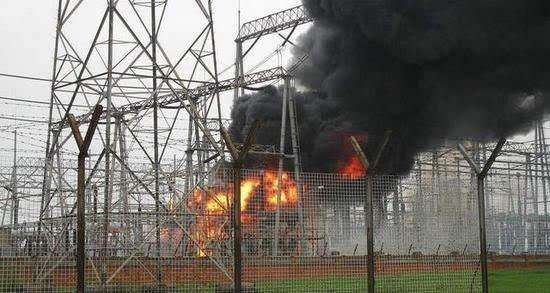Imagine a modern city going dark in seconds. No lights. No internet. No communications. No military response. Not from bombs or cyberattacks but from a cloud of fine, deadly graphite fibers. This is not fiction. It’s a rising threat and it could be China’s next weapon of choice against it’s adversaries.
Graphite bombs nicknamed as “blackout bombs,” “soft bombs,” or “power killers” are designed to cripple, not kill. They disperse chemically treated carbon filaments are thinner than human hair into the air. These ultra-conductive fibers rain down on high-voltage power lines, substations, and control equipment, causing massive short circuits and fires. The result? A city, a military base, or an entire region left in total blackout.
Now consider Taiwan an island democracy brimming with high-tech industries,tightly packed urban infrastructure, and a deep dependence on electricity and digital systems. Its defense systems, radar grids, communications, air traffic, and command networks all rely on uninterrupted power. A well-timed graphite bomb strike—detonated mid-air above key power infrastructure could paralyze the nation’s ability to respond in minutes, without firing a single bullet. And Taiwan isn’t the only potential target.
U.S. bases in Okinawa, Japan’s defense infrastructure, and even ports in the Philippines or South Korea all are tightly wired and electrically dependent, highly vulnerable to graphite attacks. In a first strike scenario, China or a proxy actor could use graphite bombs to silence radar arrays, jam communications, ground air fleets, and delay coordinated defense responses all without triggering an immediate kinetic war.
What makes graphite bombs even more threatening is their stealth and low cost. They don’t require advanced missile technology. They can be dropped from fighter jets, drones, or even sabotaged into a facility and detonated with GPS or sensor triggers. They float like dust but strike like thunder disabling entire grids while remaining hard to detect or attribute.
Used in coordination with cyber attacks or drone swarms, graphite bombs could cripple Taiwan’s defenses, disrupt allied responses, and sow mass panic in civilian populations. Worse, the long-term damage to electrical systems would take weeks or months to repair buying China a critical window for escalation, blockade, or invasion.
And unlike nuclear weapons or large-scale conventional warfare, graphite bomb attacks may not immediately trigger a unified international military response. Their non-lethal, seemingly “soft” nature provides the perfect cover for gray zone warfare the kind of hybrid strategy Beijing has mastered.
In a world where wars are increasingly fought in silence and shadows, graphite bombs represent a terrifying blind spot in national security. Taiwan and its allies or China’s adversaries has to be vigilant because the next war may not start with a bang, but with the Blackouts.

